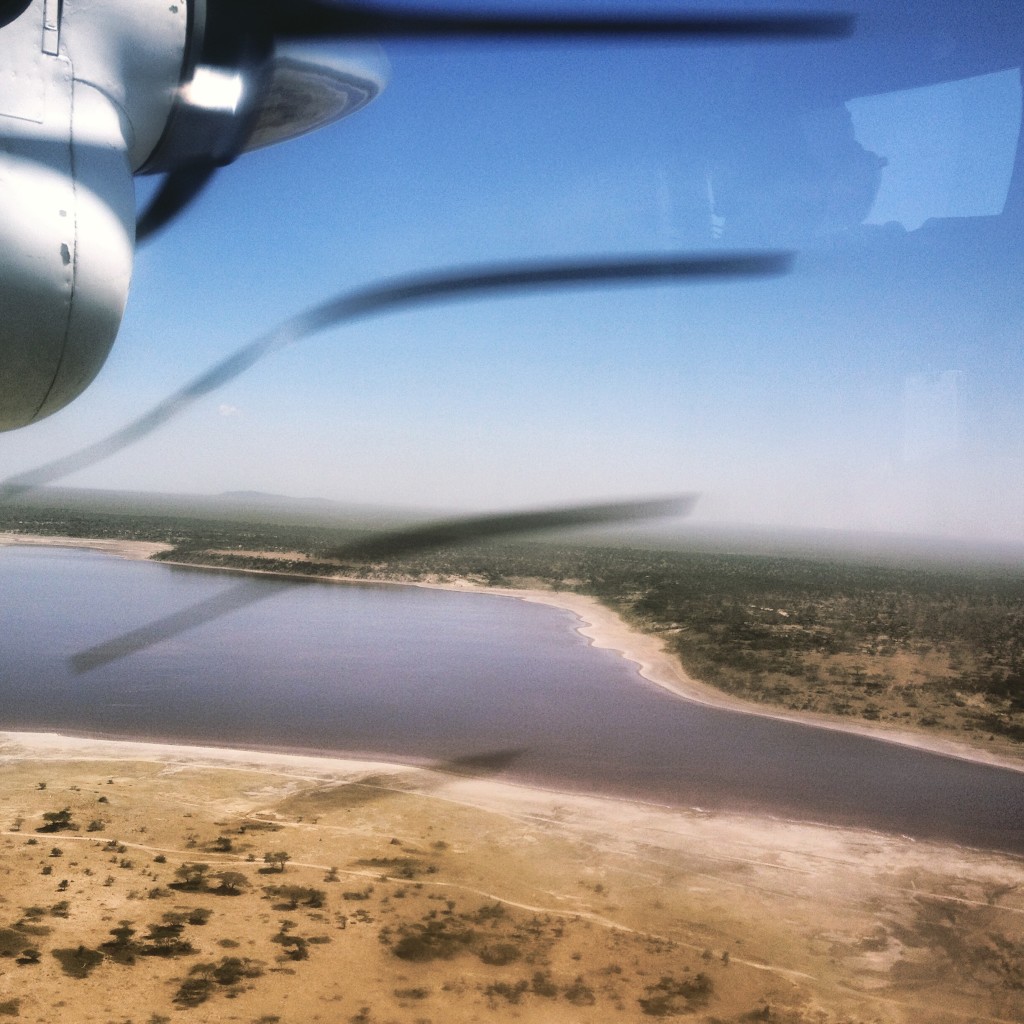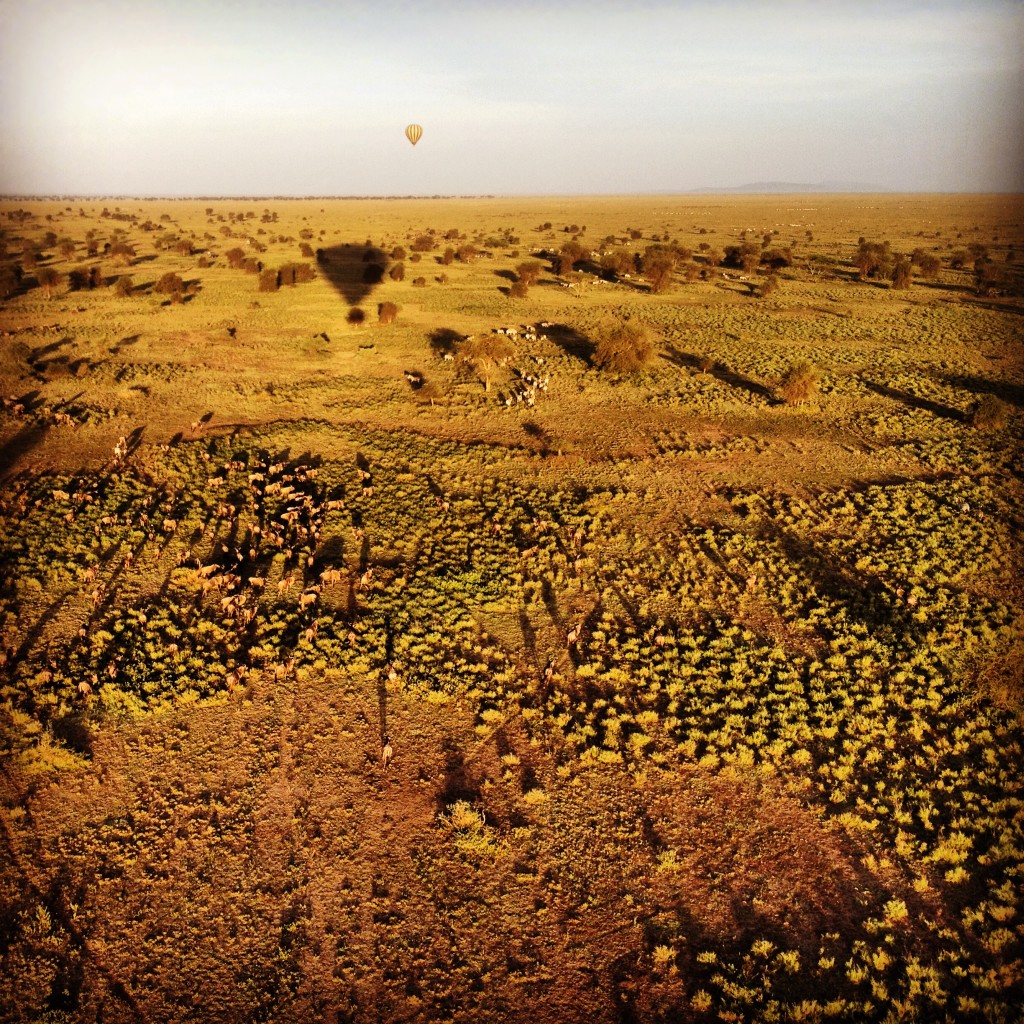
Our finals days in Tanzania were spent in the Serengeti National Park. This beautiful space has been fully preserved since 1951 (and partially so in earlier efforts by the British government).
The park is so special because it, and surrounding protected game areas, are home to the 1.2 million wildebeest who migrate annually through it.
Our trip perfectly matched with the migration in the southeastern corner of the park, so we were able to drive through the migration and share the space with an enormous number of wildebeest.
Below is a map of all the conserved spaces in Tanzania. You can see Serengeti and Ngorongoro at the center north.

“Parks Tanzania” by Bamse – Own work. Licensed under CC BY-SA 3.0 via Wikimedia Commons.
The days were very warm, sometimes rainy and humid, but always filled with animal sightings on our safaris.
The tented camp where we stayed was near two lakes that housed hippo and many birds, including flamingo, which I had never seen outside of a zoo.
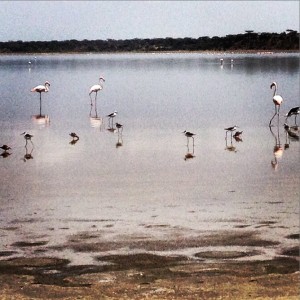
Here’s a side note for Mom: This trip was my first real attempt at birding with mom. It was fun; although some snake sightings would have been fun, too. Either way, I now have more northern Tanzania bird species memorized than North American birds.
The Serengeti National Park has a protected and very-well-studied lion population. The Serengeti Lion Project has been an ongoing look at the lions for nearly 50 years. One of our guides, David, ran the lion study for four years in the 70s. He was an excellent resource for us during our lion sightings.
Due to this study, it was not impossible to get a very close look at many lions. More than 3,000 lion live in the Serengeti ecosystem; about 10 percent of those are part of the Serengeti Lion Project.
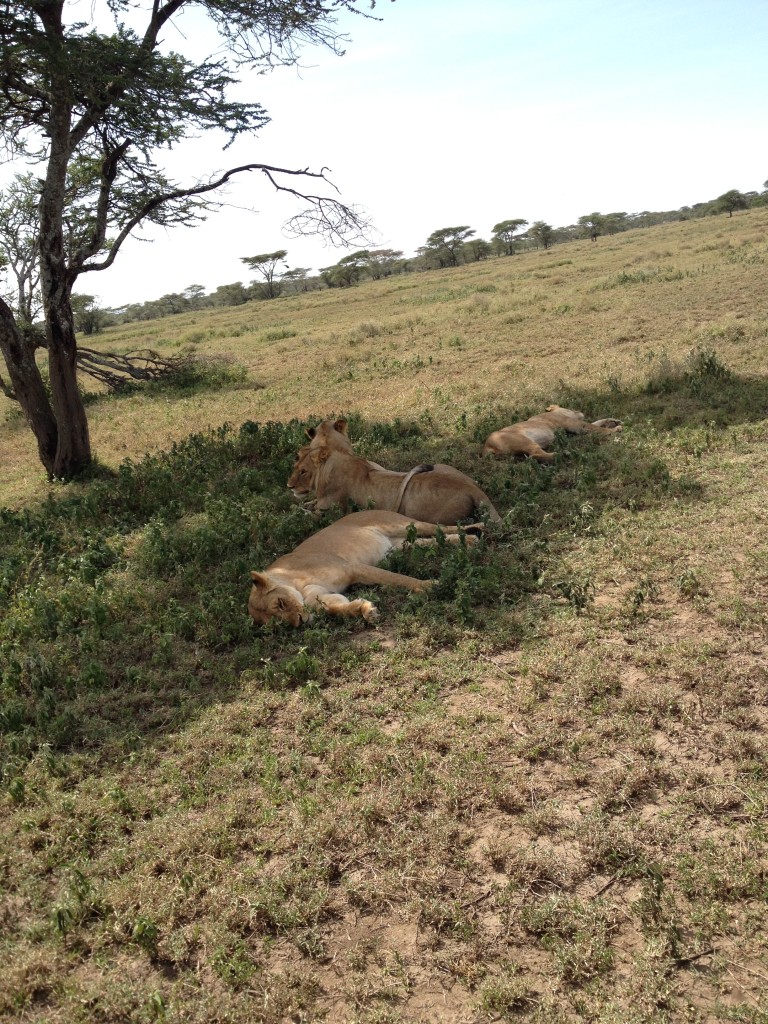
Early one morning, toward the end of our trip, we drove in the dark to a hot air balloon launch site for our ride with Serengeti Balloon Safaris. Mom had been a fan of hot air balloons for years and this would be her first (and my first) ride in a balloon.
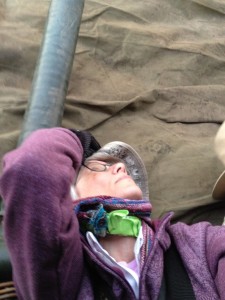
The balloons are cold-air inflated with fans until nearly full. Then, the passengers are loaded into the basket, which is laying on its side. Our balloon had a woven cane basket. We were told by our pilot that these baskets are heavier and more expensive than other types, but are ultimately preferable because they are more durable, more comfortable and, hey, let’s admit it, they just look cooler, am I right?
Once the passengers are in, the pilot starts the process of lifting the balloon with the hot air from the flame he or she — in our case, a gentlemanly he from Canada — controls at the center of the basket.
Once off the ground, the ride is smooth and quiet. Except when it’s not quiet. Like when the flame is turned on to control our height. A necessary evil, I suppose.
The view from the balloon was so interesting. Viewing the highways of animal tracks through the plains gave a new perspective of the vastness of this “never-ending” land. (The word Serengeti comes from the Maa word for “endless land.”)
My favorite part was the hyena who followed us for miles over the plans. His pace was steady and strong. I envy his endurance abilities when I think about my Pacific Crest Trail training plan.
Having now left Tanzania, what I hope to remember most is my perspective on the vastness of the landscape and ecosystem. This synchronous process of life, death, eating, sleeping, moving and stillness has been proceeding through time for millions of years. And yet, in a very short amount of time, humans could ruin it all.
In July 2010, President Jakaya Kikwete renewed his support for an upgraded road through the northern portion of the park to link Mto wa Mbu, southeast of Ngorongoro Crater, and Musoma on Lake Victoria. While he said that the road would lead to much-needed development in poor communities, others, including conservation groups and foreign governments like Kenya, argued that the road could irreparably damage the Great Migration and the park’s ecosystem.
The road is currently blocked by the East African Community Treaty, but the draw of commerce is still a threat.
